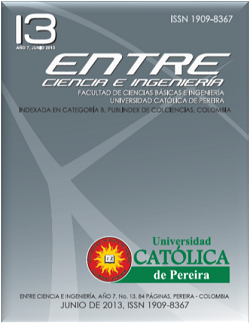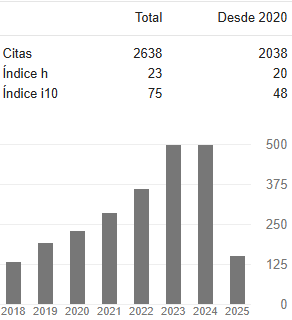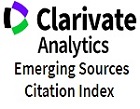Color Tuning in LED Devices Through StrainEffects
DOI:
https://doi.org/10.31908/19098367.662Keywords:
Heterostructures, quantum wells, strain effect.Abstract
In the last decades, the study of semiconductor materials has been intensified due to their potential applications in electronic mechanisms, optoelectronic devices and solar cells, among others. This type of heterostructure is important because its emission can accomplish a large range of wave lengths in visible spectrum. The ground state energy variation was studied for electrons and heavy-holes under strain effects, the results obtained were compared to those which did not take into account the effects of the tension, For this reason, they conducted simulations employing the FORTRAN programming language. Effective mass approximation was taken for simulations, besides a hydrogen-type trial function was used. Computations were made employing quantum wells based in CdTe/ZnTe heterostructure under strain effects with different widths defined in atomic layer, where it was analyzed the width of the well and height of the barrier. The simulation results indicatethat films with strain effect present a considerable increase in the quantum confinement properties for heavy-holes and a significant decrease in these properties for electrons compared to films without strain effects.
Downloads
References
C. Vargas-Hernández, et. al., XPS, SEM and XRD Investigations of CdSe Films Prepared by Chemical Bath Deposition, Physical Status Solidid (b) 242, 9, 1897 (2005).
C. Vargas-Hernández, et. al., Relaxation During the Layer by Layer Growth of Cubic CdSe onto ZnSe. O. Melo, Applied Physics Letters, 82, 1, 43 (2003).
S. MacÂkowski, et. al., Infuence of MBE Growth Conditions on Optical Properties of CdTe/ZnTe Quantum StructuresThin Solid Films, 367, 210 (2000).
Strained-Layer CdTe/ZnTe Superlattices, Physical Review B, 38, 11, 7740(1988).
H. Mariette, et. al., Optical Investigation of Confinement and Strain Effects in CdTe/Cd1-xZnx The Single Quantum Wells, Physical Review B, 38, 17, 1243(1988).
Y. P. Varshni. Temperature Dependence Of The Energy GAP In Semiconductors, Physica 34, 149 (1967).
O. Madelung, Semiconductors- Basic Data, 2nd Edition, Springer, (1996).
J. Sadowski, Exitonic Luminescence in Strained Quantum Wells, Optoelectronic Review, 4, 3, 135(1996).
R. Kostic, et. al., Optical Properties of CdTe/ZnTe Core/Shell Quantum Dots Suitable for Targeted Bioimaging, Optoelectronics and Advanced Materials- Rapid Communications, 6, 1, 121(2012).
S. Adachi, Properties of Group-IV, III–V and II–VI Semiconductors, John Wiley & Sons Ltd. (2005).
Downloads
Published
Issue
Section
License
Copyright (c) 2019 Entre ciencia e ingeniería

This work is licensed under a Creative Commons Attribution-NonCommercial 4.0 International License.



















